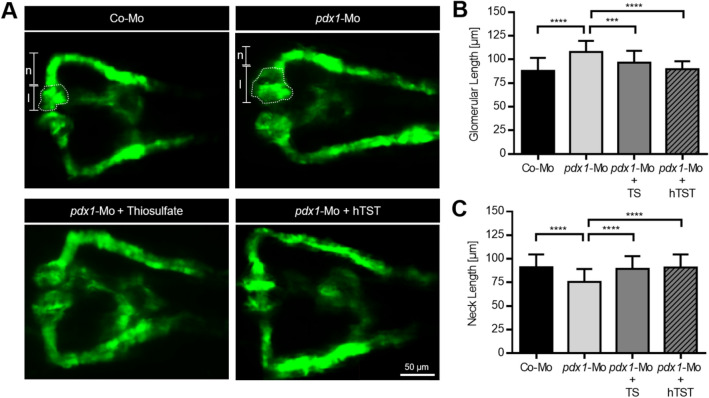Fig. 2
Thiosulfate and human thiosulfate sulfurtransferase treatment rescues pdx1 morpholino-induced hyperglycemic pronephros damage. (A) Representative visualization of the zebrafish pronephros in Tg(wt1b:EGFP) embryos at 48 hpf with different experimental conditions. Embryos injected with only a control morpholino (Co-Mo) show the typical pronephros morphology at 48 hpf, while injection with the pdx1 morpholino (pdx1-Mo) leads to a hyperglycemia-mediated pronephros phenotype with an increased glomerular length and a shortened pronephric neck length. Treatment via either exposure to 10 mM thiosulfate (TS) or injection of 1 nl human thiosulfate sulfurtransferase (hTST) at a concentration of 1 µg/µL rescued the pronephros phenotype in the pdx1 morphants. (B–C) Evaluation of the pronephros phenotype in Tg(wt1b:EGFP) embryos at 48 hpf shows significant rescue of both (B) glomerular length and (C) pronephric neck length by TS and hTST treatment in pdx1 morphants (n = 45 for Co-Mo and pdx1-Mo, n = 30 for the TS and hTST groups). Measurements for glomerular length (l) and pronephric neck length (n) have been marked and the glomerulus was encircled for one pronephric side in two images in (A) as example. Lengths given in (B–C) represent the total sum of both the left and right side measurements added up. The scale bar is 50 μm in (A). Statistics utilized one-way ANOVA + Sidak’s post-hoc (B–C); mean + SD reported; ***p < 0.001, ****p < 0.0001.

